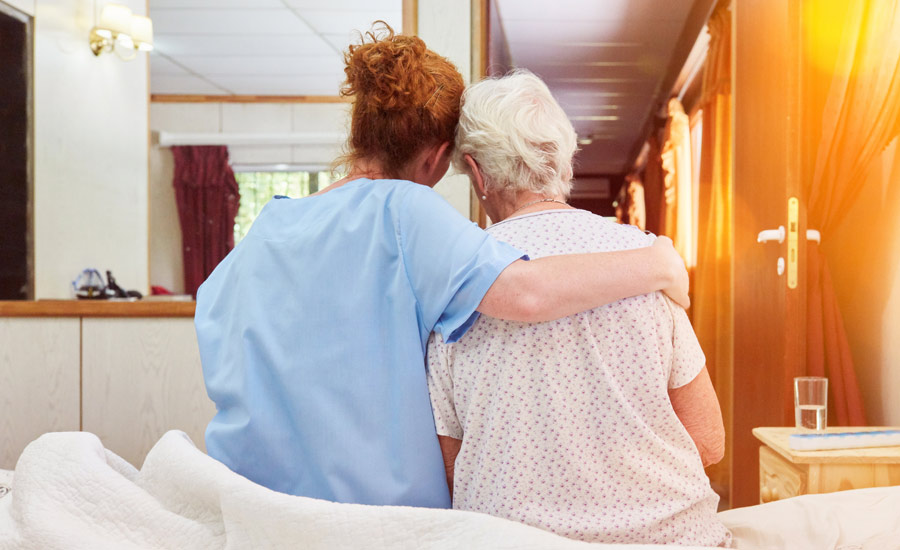What Happens During End-of-Life Care in a Care Home?

End-of-life care isn’t easy to think about, but when someone you love is approaching that stage, knowing what to expect can take away some of the fear.
In this article, we’ll discuss how end-of-life care works in a home setting, what kind of support is available and what matters most when care shifts from treatment to comfort.
What Support Do Families Get During End-of-Life Care in a Care Home?
Care homes support families with regular updates, open visiting times and space to be present without time pressure. Staff are there for practical help, gentle guidance and honest conversations. After their loved one passes away, the home guides families through the next steps and offers follow-up support as needed.
What End-of-Life Care Looks Like in Practice
When someone is approaching the end of their life, care shifts. Staff work to keep your loved one comfortable, settled and well-supported in their final days.
Here’s what that means in real terms:
- Medication is reviewed and adjusted to ensure the resident is not in pain or distress. Healthcare is managed in a care home with input from their GP or a visiting palliative care team.
- Routine check-ups, appointments or procedures are stopped unless they’re necessary for comfort and the environment becomes quieter and more personal.
- The usual structure of the day, such as meals, routine care, wake-up times, is adjusted around how the resident is feeling, often on a day-by-day basis. If they’re sleeping more, care is gently given when needed.
- Staff tend to slow down their approach during this stage. Tasks aren’t rushed and residents are usually cared for by staff they already know, which helps reduce confusion and anxiety. One-to-one time often increases simply because fewer group activities are taking place and more attention is given to comfort and observation.
- Families are encouraged to visit freely, stay longer and be part of this stage. They’re kept informed and staff are available to answer questions or help them know what to expect throughout.
- The room is set up to feel peaceful, with low lighting, minimal noise, private belongings nearby and space for visitors.
The Role of Staff and the Care Plan
Care at the end of life involves a lot of coordination. While families often see the calm, quiet side of things, there is ongoing work behind the scenes to ensure care is timely and consistent. Staff communicate with each other regularly and adjust care based on what your loved one needs at that stage.
The care plan is reviewed regularly
Staff update the care plan based on any changes they observe, things like breathing patterns, appetite, alertness or physical comfort. It’s a working document that’s adjusted quickly and thoughtfully.
Staff communication is tight
At every handover, the team shares exactly what has changed and what the end-of-life care resident needs, keeping everyone on the same page, whether it’s the day shift, night staff or senior team.
External professionals are brought in when needed
If additional input is required, such as a GP, district nurse or palliative care team, the home arranges that without delay. Families don’t need to chase anything or coordinate outside services themselves.
Decisions are made as a team
The staff talk through changes as they happen and adapt care as a group. Everyone involved in that resident’s care has a clear understanding of what matters most and how to support it.
Families are kept informed, clearly and calmly
Updates are given regularly and in a way that they can fully understand. Families are encouraged to ask questions, speak up and stay involved without being overwhelmed.
You Don’t Have to Navigate This Alone
It’s natural to worry about your family member during this time, but be assured that care homes have fully trained, experienced and compassionate teams to make sure residents are as comfortable as possible.
The end-of-life stage in a care home is planned carefully and delivered with consistency. Families are kept informed, professionals are involved when needed and care is adjusted as things change.
When these things are in place, the focus stays where it should be – on your loved one and the people close to them.
Ready to explore...
